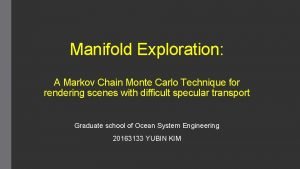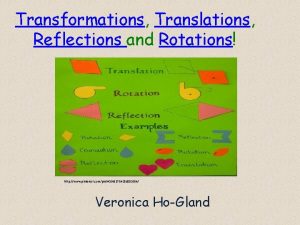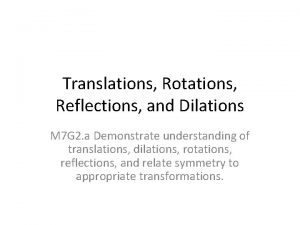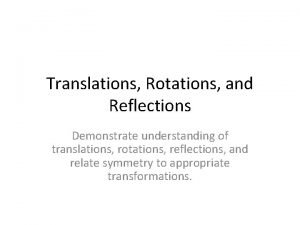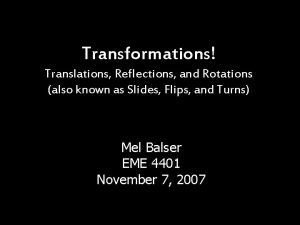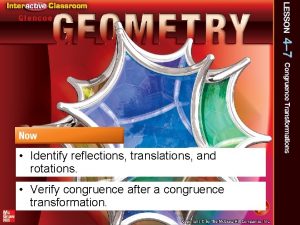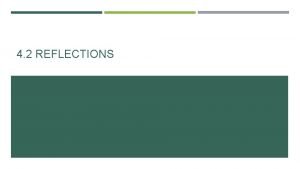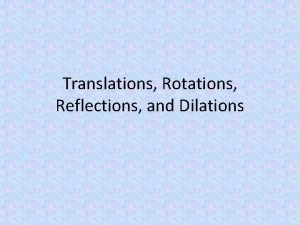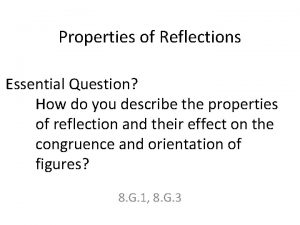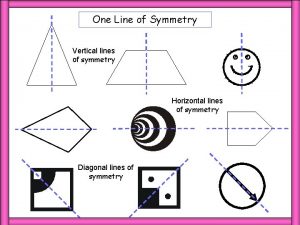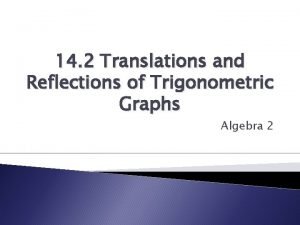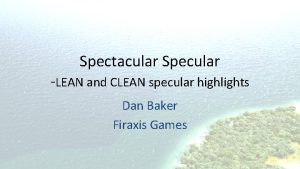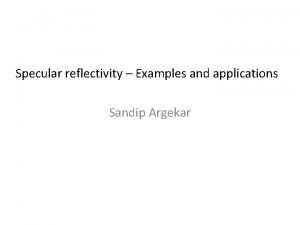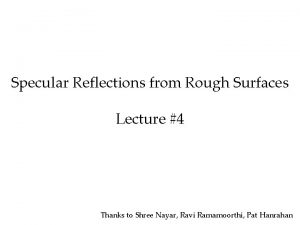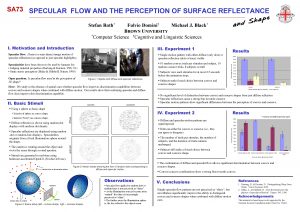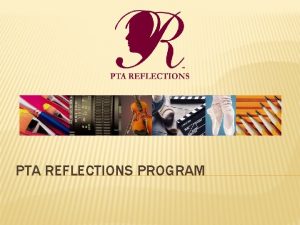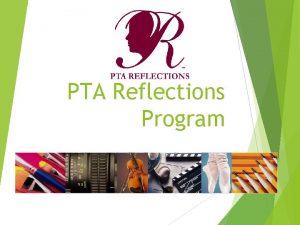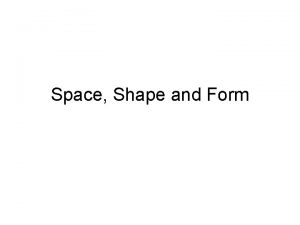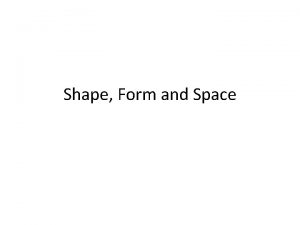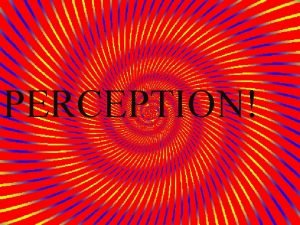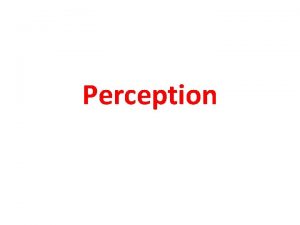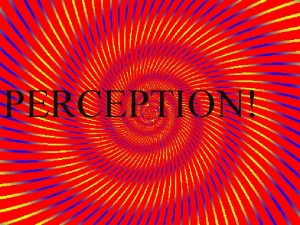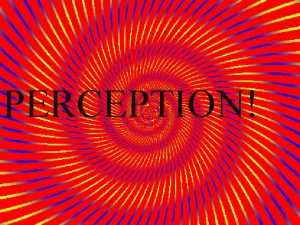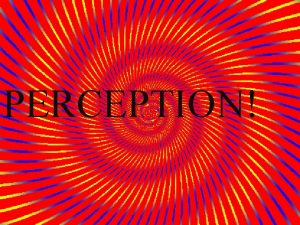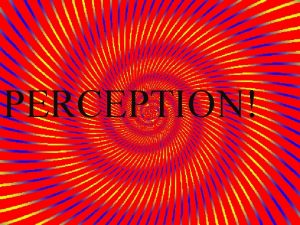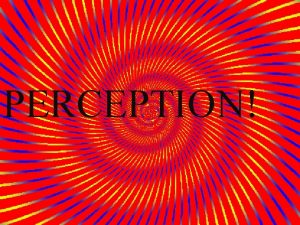Specular Reflections and the Perception of Shape Roland

















- Slides: 17

Specular Reflections and the Perception of Shape Roland W. Fleming, Antonio Torralba, Edward H. Adelson Journal of Vision (2004) yan karklin. cns lunch - 02/16/05

observation: we are able to recover some depth using only specular reflections problem: how is this accomplished? no “traditional” cues available - motion - disparity - texture - lambertian shading yan karklin. cns lunch - 02/16/05

can we really recover depth from specularities? Savarese, Li, Perona (2004): No, they’re “only a very weak cue. ” -3 objects - patch w/spec reflections - subjects try to guess original object in 3 expts: yan karklin. cns lunch - 02/16/05

can we really recover depth from specularities? Fleming, et al (2003, 2004): Yes, and “reliably and quite acccurately. ” - stimuli: irregular, smooth, w/boundaries - subjects adjust randomly to perceived orientation yan karklin. cns lunch - 02/16/05 initialized normals

what information is available? yan karklin. cns lunch - 02/16/05

what information is available? . . . and we don’t rely on boundaries yan karklin. cns lunch - 02/16/05

what information is available? a relationship between curvature and reflection compression yan karklin. cns lunch - 02/16/05

we have to make some assumptions • about the object • about the surroundings texture compression can be computed quickly (though roughly) with filters • using steerable pyramid • 24 filter orientations at each location • 1 scale – very local yan karklin. cns lunch - 02/16/05

texture compression can be computed quickly (though roughly) with filters • using steerable pyramid • 24 filter orientations at each location • 1 scale – very local yan karklin. cns lunch - 02/16/05

stable across different scenes yan karklin. cns lunch - 02/16/05

stable across different scenes yan karklin. cns lunch - 02/16/05

correspondence between truth and guesswork yan karklin. cns lunch - 02/16/05

how realistic are the stimuli? - smoothness - limited world scenes - specularity only yan karklin. cns lunch - 02/16/05

orientation fields for shaded/specular objects can be consistent yan karklin. cns lunch - 02/16/05

. . . or very inconsistent yan karklin. cns lunch - 02/16/05

so how do we disambiguate the two? yan karklin. cns lunch - 02/16/05

discussion • claims • simple, quick computations can give some information about depth • evaluation • subjects can perceive shape from specularity alone • orientation field and its anisotropy correlate with curvature • this is stable across scenes and varies shape-to-shape • reflection-induced orientation fields are [consistent/inconsistent] with texture and shading • implication • fast, biologically relevant computation • real world settings require parallel processing of shading/reflection • what’s missing • priors on objects, world, inference, separation of reflection yan karklin. cns lunch - 02/16/05
 Slit lamp technique
Slit lamp technique Warm light rgb vray
Warm light rgb vray Ambient diffuse specular
Ambient diffuse specular Specular reflection
Specular reflection Specular manifold sampling
Specular manifold sampling Shape matching and object recognition using shape contexts
Shape matching and object recognition using shape contexts Shape matching and object recognition using shape contexts
Shape matching and object recognition using shape contexts Aerofoil shapes
Aerofoil shapes Translations reflections and rotations
Translations reflections and rotations Reflections translations and rotations
Reflections translations and rotations Translations rotations and reflections
Translations rotations and reflections Translations reflections and rotations are all known as
Translations reflections and rotations are all known as Identify reflections, rotations, and translations
Identify reflections, rotations, and translations Horizontal and vertical reflections
Horizontal and vertical reflections Translation reflection rotation dilation
Translation reflection rotation dilation What are the properties of reflections
What are the properties of reflections Vertical line of symmetry
Vertical line of symmetry Trig identities from reflections and rotations
Trig identities from reflections and rotations




